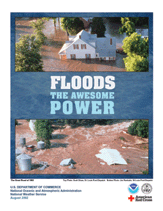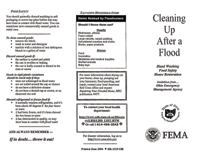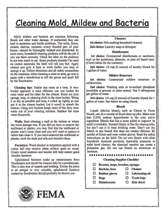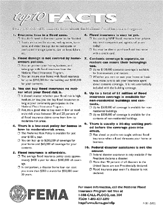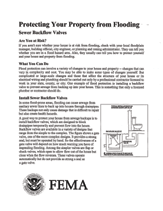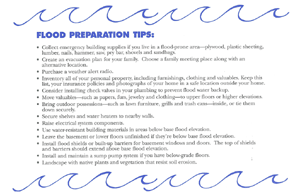Jennifer James
Director
2295 Reiser Ave SE
New Philadelphia, Ohio 44663
Phone: 330-308-6670
Fax: 330-308-6675
Office hours: 8:00 am to 4:30 pm
Monday through Friday
Floods
Floods are one of the most common hazards in the United States. Flood effects can be local, impacting a neighborhood or community, or very large, affecting entire river basins and multiple states.
However, all floods are not alike. Some floods develop slowly, sometimes over a period of days. But flash floods can develop quickly, sometimes in just a few minutes and without any visible signs of rain. Flash floods often have a dangerous wall of roaring water that carries rocks, mud, and other debris and can sweep away most things in its path. Overland flooding occurs outside a defined river or stream, such as when a levee is breached, but still can be destructive. Flooding can also occur when a dam breaks, producing effects similar to flash floods.
Be aware of flood hazards no matter where you live, but especially if you live in a low-lying area, near water or downstream from a dam. Even very small streams, gullies, creeks, culverts, dry streambeds, or low-lying ground that appear harmless in dry weather can flood. Every state is at risk from this hazard.
What is the flood risk where I live?
Be Prepared
Reduce Potential Flood Damage By
- Raising your furnace, water heater, and electric panel if they are in areas of your home that may be flooded
- Consult with a professional for further information if this and other damage reduction measures can be taken
Floods Can Take Several Hours to Days to Develop
- A flood WATCH means a flood is possible in your area
- A flood WARNING means flooding is already occurring or will occur soon in your area
Flash Floods Can Take Only a Few Minutes to a Few Hours to Develop
- A flash flood WATCH means flash flooding is possible in your area
- A flash flood WARNING means a flash flood is occurring or will occur very soon
When a Flood WATCH is Issued
- Move your furniture and valuables to higher floors of your home
- Fill your car’s gas tank, in case an evacuation notice is issued
When a Flood WARNING is Issued
- Be alert to signs of flash flooding and be ready to evacuate on a moment’s notice
When a Flash Flood WARNING is Issued
- Or if you think it has already started, evacuate immediately. You may have only seconds to escape. Act quickly!
- Move to higher ground away from rivers, streams, creeks, and storm drains. Do not drive around barricades- they are there for your safety
- If your car stalls in rapidly rising waters, abandon it immediately and climb to higher ground
Prepare a Family Disaster Plan and a Disaster Supply Kit
Disaster and Preparedness Information
- This preparedness guide explains flood-related hazards and suggests life-saving actions you can take. With this information you can recognize a flood potential, develop a plan, and be ready when threatening weather approaches. Remember- your safety and your family’s safety is up to you!
- This FEMA brochure gives you information on how to clean your home and what you need to do following a flood.
- This FEMA brochure gives you information on how to clean your home of mold, mildew, and bacteria that often occurs following a flood.
- This FEMA fact sheet gives the top 10 facts that every consumer needs to know about the National Flood Insurance Program.
- This FEMA fact sheet information on protecing you home from flooding and about Sewer Backflow Valves.
- Click on Image for Larger View.



